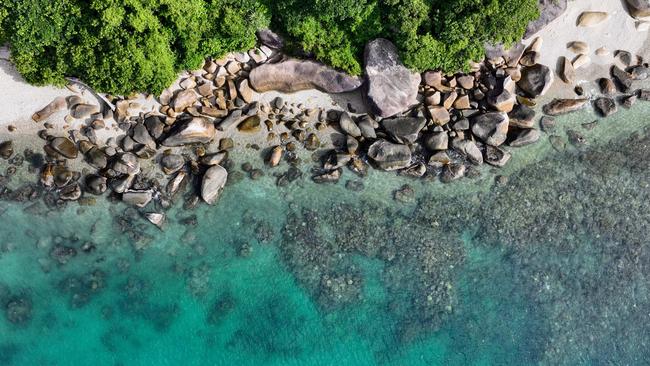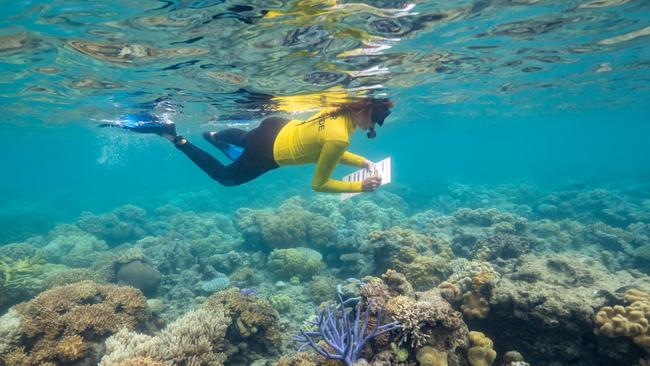Controversy around the coral reef coverage on the Great Barrier Reef
A recent report suggests the public has misunderstood the Great Barrier Reef, and unaware of one key fact.
News
Don't miss out on the headlines from News. Followed categories will be added to My News.
A recent report has shown the Great Barrier Reef has more coral coverage than ever recorded but surveys suggest the general public has “no idea”.
The Australian Institute of Marine Science, who have conducted detailed underwater studies since 1986, and have found the reef to be “well covered”.
However, a survey spearheaded by the team at the Australian Environment Foundation found only 10 per cent of Australians realised this was the case.
Australian Environment Foundation director and former JCU professor Peter Ridd said last year’s coral cover hit a record high.
“It is absolutely wonderful news that the reef is in such good shape,” Mr Ridd said.
“I think that Australians don’t know this because the common narrative is that it is suffering.
“People deserve to know when the reef is healthy because of the impact it has on tourism.”
Mr Ridd said the survey asked more than 1000 Australians if they know the reef was healthy and more than 80 per cent thought the situation was average or getting worse.

“The reef fluctuates dramatically, and we never quite know when we will lose coral again, especially because we can’t predict the weather that well,” he said.
“Unfortunately, I don’t think healthy coral fits the narrative that the reef is damaged, so when it does change and coral does grow, the big institutions don’t tend to share the news.
“This is bad for Cairns tourism as a whole and I wish it was shared more.”
A spokeswoman from the Department of Environment and Science said the recovery was due to the fastest crowing corals and are not a true reflection of the health of the reef.
“In August 2022, the AIMS Long Term Monitoring Program reported widespread coral recovery with the highest coral cover recorded in 36 years for some regions,” she said.
“This is great news for the overall state of the reef and its resilience.
“However, the recovery was dominated by the fastest growing corals that are fragile to disturbances such as cyclones, coral bleaching or crown-of-thorns starfish.”
The spokeswoman said this was normal for the recovery process but meant the condition of the coral could reverse.

“The reef is at increased risk of widespread coral bleaching events caused by climate change, which means the time for recovery between events is becoming shorter, meaning hard coral may not have time to establish,” she said.
“The department is cautiously optimistic about the recovery of coral and is committed to bold but achievable climate targets that will reduce our emissions.”
Mr Ridd said there were two main reasons for institutions not celebrating the reef.
“I think it ultimately comes down to money and the love for the reef,” he said.
“Unfortunately, a healthy reef doesn’t quite fit the narrative.”

He added: “No matter what, we need to make sure we are the lead country in caring for our marine life; we are the owners of one of the most beautiful reefs in the world,” he said.
Big Fish Down Under tourism operator Daniel McCarthy said he had run a charter boat for 30 years to the reef.
“I saw the state of the reef after cyclones and it was dire, but right now the reef is in pristine condition,” Mr McCarthy said.
“Talking badly about the reef when it is in such good condition can have big impacts on tourism, and I often see tourists quite surprised by how amazing the reef looks at the moment.”
Another tourism operator and dive shop manager Paul Lim said some made it sound worse than reality.
“But there is no denying that the reef is damaged in some parts,” Mr Lim said.
“I have seen damaged coral but it is not as exaggerated as some may think.”
Australian Marine Conversation Society senior campaigner Cherry Muddle said the coral coverage can’t be misunderstood.
“The information released by AIMS in August last year refers to hard coral cover improvement in the northern and central sections of the reef but shows less coral cover in the southern section,” Ms Muddle said.
“It is important to note that the increase in hard coral cover in the northern and central regions is mostly with the acropora species – known as a fast growing ‘weedy’ coral, which is particularly susceptible to marine heatwaves and cyclones, and the preferred food for crown of thorns starfish.
“The Reef’s conservation status is ‘critical’ and will continue to deteriorate without stronger action to limit global heating to 1.5 degrees – a temperature threshold for the survival of coral reefs.”
More Coverage
Originally published as Controversy around the coral reef coverage on the Great Barrier Reef




